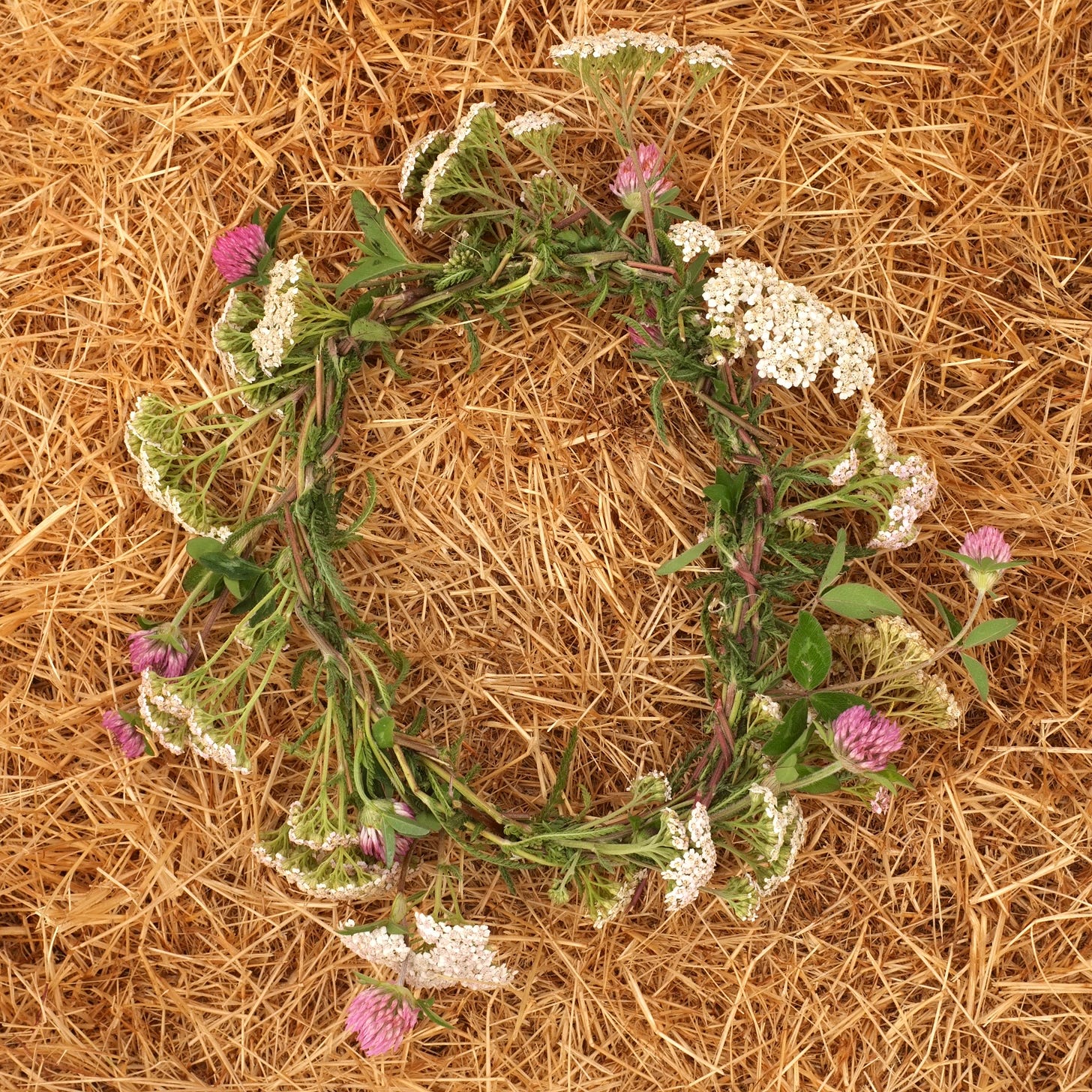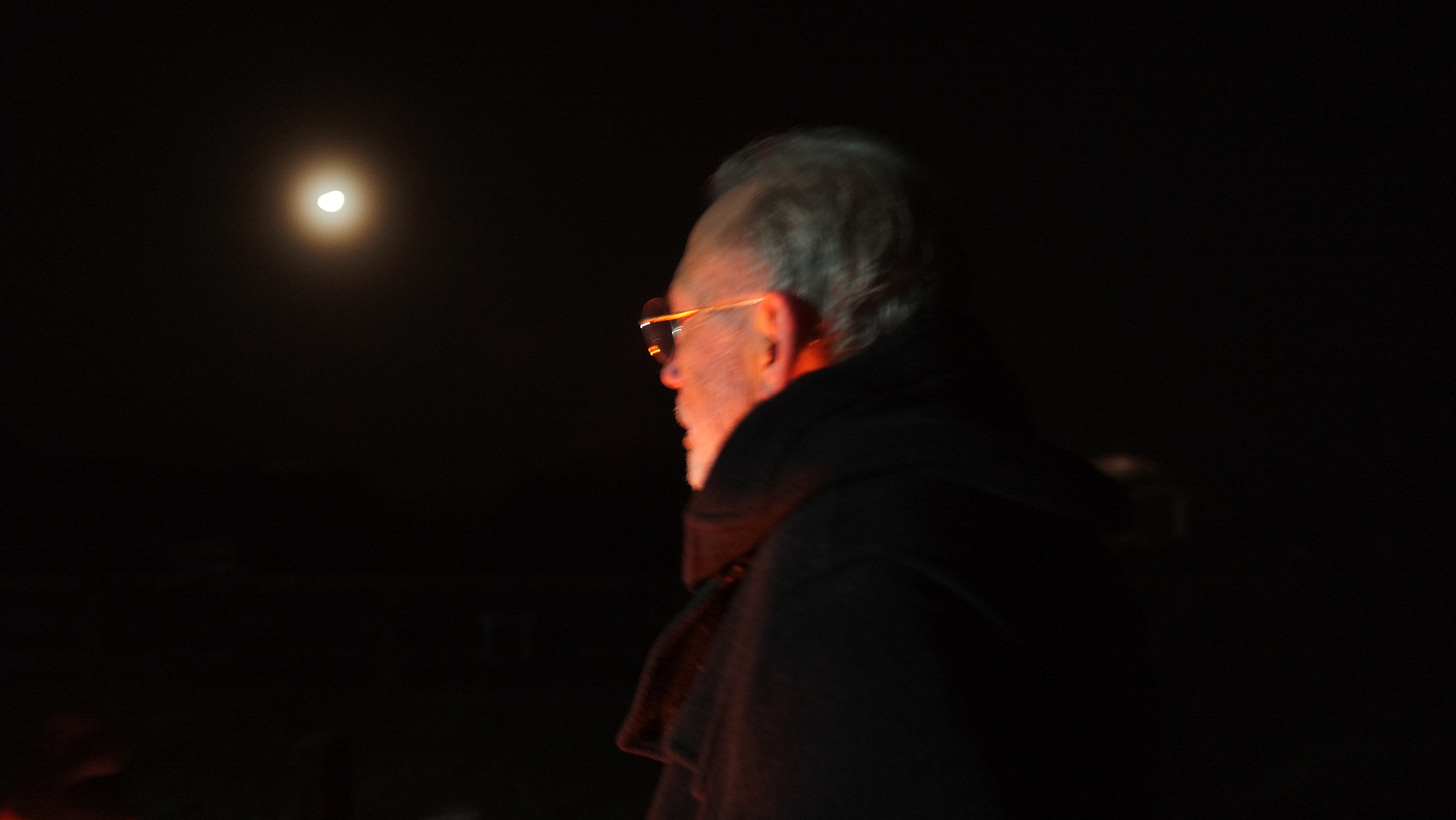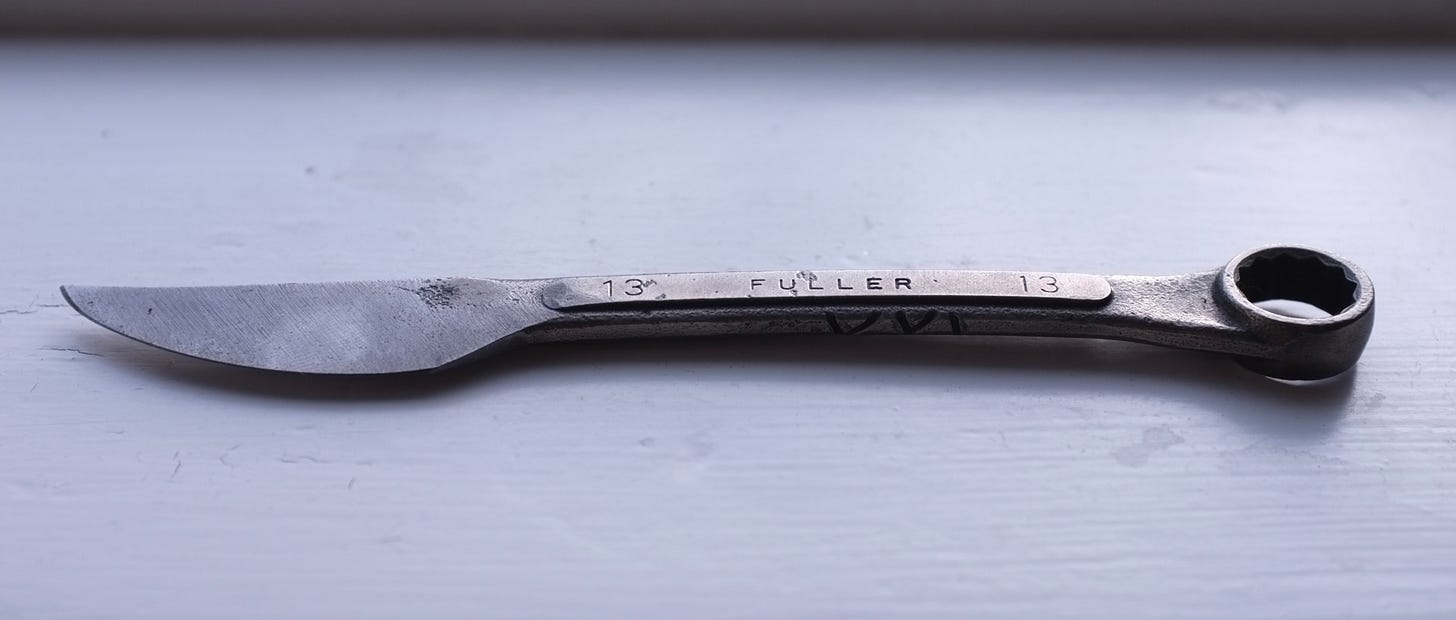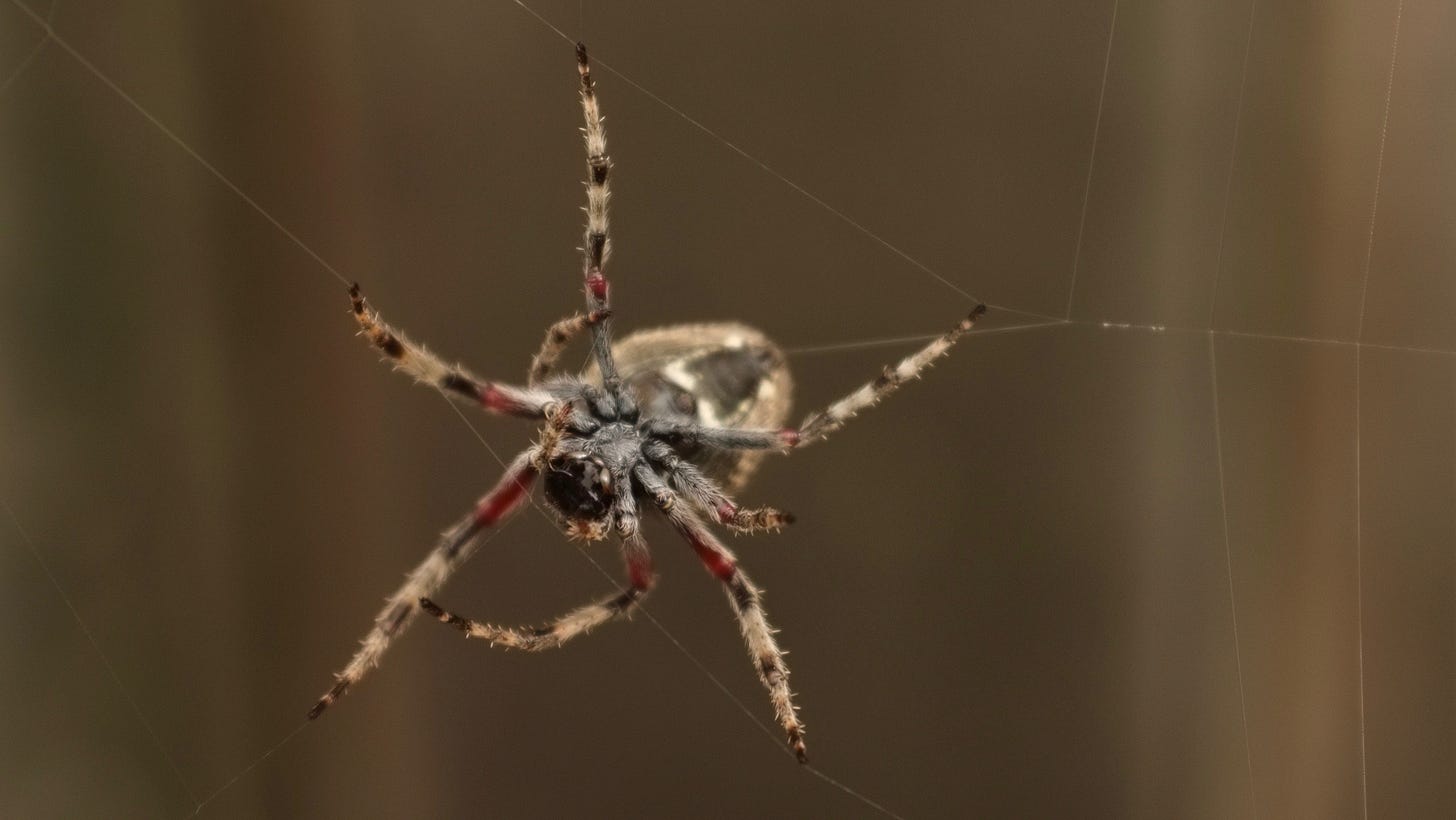Maggie Nelson, The Argonauts: “On the inside, we were two human animals undergoing transformations beside each other, bearing each other loose witness. In other words, we were aging.”
Tony’s funeral was conducted on the Autumnal Equinox, by Druids. A fantail flitted in the sunlit green outside the chapel window. Charlene had sunflowers crowning her staff; Tony had sprigs of rosemary on his chest. When I saw him in his wicker coffin I thought about the tens of thousands of hours his hands had played guitar; his mastery ended, his music stilled.
Bob in his dark suit played this, “The first song Tony ever stole from me.”
Kev and I sang Shepherds Arise, because Tony loved grand old hymns,1 and because it was the last song we three sang together, in the hospital. It’s the kind of song it’s impossible to sing quietly; afterwards the other people in the room applauded from behind the blue curtains.
At the wake I broke my Lenten sobriety to drink the ceremonial Lagavulin (my favourite whisky as well as Tony’s). The next morning I took the rosemary sprigs from our lapels, dipped them in rooting hormone, and wrapped them in damp moss. My name-herb is hardy; I trust they will grow.
A dead person has such power, such immanence. A force field palpable in the room, intensified around the body, and most of all inherent in the body itself. To touch a dead friend is a kind of intimacy unparalleled in life. And yet it’s normal to touch a friend, and it still feels like that, too.
Andy (a doctor, whose job it is to know when people are dead) told me that it never stops being weird seeing someone who was recently alive, and now isn’t. He said you can tell by the eyes if someone has died— they get a certain look. Then you close their eyelids with your fingers and send them ‘downstairs’.
A phalanx of cyclists rides by. (A weekend morning— compulsory aerobic exercise.) Male, white, fiftyish, lean, lycra’d bureaucrats, two by two, indistinguishable, yelling at each other. From the babble of their triplicate shouts floats a clear phrase: “Hip operation.”
As the bus pulls into the bus stop, the guy who begs outside New World with his dog is getting arrested: two cops have an arm each, trying to wrestle them behind his back. Beard, beanie, khaki jacket. He’s standing with his mouth open, yelling, resisting, and the black dog is barking steadily, right up against the cops’ legs, a volley of barks.
(That guy is an old enemy of Zara’s. One time he was pointing his finger right in her face, so she bit it.)
The bus pulls out of the bus stop: cut.
A Grandpa on the bus, playing This Little Piggy with his Grandbaby’s bare toes. (The naked brown toes have that prehensile look, like the tentacles of a tropical anemone— soft feet that have not yet learned to walk.) He turns to the other baby across the aisle, and reaches for that baby’s toes too: both babies must be his. He plays Peek-a-boo with the baby beside him, then Peek-a-boo with the baby across from him, his merry face appearing and disappearing under the bill of his blue cap. The babies must be same-age cousins, as they each have their own set of parents. I can’t see their faces, only the backs of their heads: one is blonder, the other curlier.
There was a time I checked out cute Dads, now I check out cute Grandads. To everything a season, I suppose.
The markets at Cubadupa are at least 50% sparkly stickers proclaiming flavours of queerness and neurospiciness; sparkly stickers of kawaii narwhals, moths, stingrays, cats, snakes; and large resin / acrylic earrings in the shape of houseplants, rainbows etc. Candles, soap, ceramics. Momentarily seduced by the cumulative effect of so many candy colours, I briefly consider an array of snake-silhouette earrings, laser-cut from perspex, mirrored like CDs so they flash in the sunlight. (Would I wear them, though? No, I wouldn’t.)
Further snake earrings: these ones say Eat the Rich on their heads. Call me a cynic, but the proliferation of these items seems a manifestation of the end times, like Rome before the fall. Not because I object to gayness or narwhals or stickers per se, but because these products are… what exactly?… Bourgeois? Superfluous? Non-functional? (At least you can drink out of a ceramic cup— but I am well-stocked with cups.)
I try to remember what we used to have at markets and can’t. But was it maybe… Useful craft? Honest peasant things to eat or wear? (Give me a small-town market any day: Granny-craft, wood-turning, second-hand books and clothes, jars of preserves.)
At Newtown Fair I bought a knife made from a spanner, from the young man who forged it.2 When I picked up every knife on the table in turn, he got his box of spares out— an old tin— and handed me one after another, so I could choose my ultimate favourite. I found this endearing. The one I chose is numbered 133 and you can see the previous owner's mark on the spine of the tool. Afterwards there was engine oil on my fingers.
That’s what I mean— there’s a thingness about this knife that’s absent from cute stickers designed on a computer and printed in another country. It’s materiality that I crave: thingness.
At Ngā Taniwha stage. The back of a man’s head in the crowd. Through the hole in the back of his baseball cap, a half-circle of clean-shaven scalp is bisected by a vertical scar like a zip.
This audience space is usually a carpark. A toddler is sitting in a wet circle, playing in a coffee-coloured puddle. It fills and empties a plastic Cubadupa cup4 with muddy water and chunky gravel. The parent is anarchist rather than inattentive: Playcentre-style messy play. (I think of the Himba baby from the movie Babies, kneeling down to drink from a puddle.)5
Another toddler walks up to the puddle, wanting to join. This one is pristine, with shiny black hair and a Batucada t-shirt. I follow my friends away before seeing how this little scene plays out, but it is easy to foresee a few trajectories, most leading to tears before bedtime.
Later, on the near-empty top deck of the bus home, a Mother and baby are seated a few rows in front of me. They are speaking another language to each other. The parent is singing The Wheels on the Bus, but not in English. It takes me a while to work out what the language is: te reo Māori. The Mum’s twist of red hair, her fair skin, had thrown me off.
The baby is wearing a knitted mustard hat with round animal ears sticking out the sides, and peeking at me through the seat hole. We duck our heads down, then up again. Down, up. Again, again! Baby thinks this is hilarious, laughing, showing pearly teeth.
It’s late at night, late for a little one, and the full moon is riding high. As we ride along the ridge, the parent points it out to the baby. “Marama.”
Leaning its forehead on the glass, baby says “Matapihi.” (Window.) and “Winiwini.” (This means shaking or trembling: I guess in reference to the shaking of the bus, the vibrations felt through the skull.)
Baby sees itself reflected in the dark window. “Pōtae.” (Hat.)
“Āe,” says Māmā. “Pōtae teti pea.”
It takes me a moment. Teti pea. Teddy bear hat.
Riding the bus— and kicking around in the daytime more generally— my companions are often the very old and the very young. I am interested in both of these categories of human. The littlies for their absolute presentness and unselfconsciousness. (In particular I like the way they are keen for a good interaction with a stranger— just like I am. Babies love eye contact, and in these days of smartphone-addicted parenting, many babies are bored, looking around for an entertaining face.)
, a Wellington bus driver, just wrote a sweet piece about old people riding the bus. He notes that old people ride the bus in the daytime and evening because that’s when they can travel free on their Gold cards.6 Like babies, oldies are generally open to interacting with a stranger, to yarning and hanging out. They’ve seen enough of life that many of them don’t give a fuck any more, which I appreciate. I aspire to the badassery / rock-in-the-river equanimity of certain of the old.7Babies are often sentimentalised, old people are often infantilised. Both of these patronising misperceptions obscure the truth: they are past and future iterations of us middle-dwellers.
What thou art now, wayfarer, world-renowned,
I was: what I am now, so shall thou be.8
Outside my kitchen window, a kahu kowhai, a yellow admiral butterfly, is caught in the web of an orbweaver. The butterfly is flinging itself in tethered circles so fast it’s a blur, but the spider is already upon it, heavy, gripping, and the butterfly slows, envenomed, and now I can see them clearly: the spider is riding the butterfly’s back like a lover. Now I can see the beautiful licheny colouration of the orbweaver. The butterfly’s wings are outspread, its legs and antennae fall forward into empty space. It has that kind of gormless, shocked look butterflies have on their faces, bulging eyes, tongue out.9
There’s a horror to watching. Imagine being the butterfly, unable to get free (once the butterfly’s in the web it’s done for, though: even if it can get free, it’s impossible to get the sticky silk off the wings). The light tread of Death, the hypodermic fangs in the back. The spider is like any charming predator, though, like a cat, for instance. Assassination is just how it gets its living.
I think they reminded him of his London childhood.
It was in Little Poland; the young smith had a Polish surname. Pretty sure he’s the scion of these sausagemongers: https://thepolishsausagecompany.co.nz/
13 = Death, in the Tarot.
You have to buy these official cups to purchase alcohol at the festival.
As seen here at 1.29:
The Himba baby— Ponijao— is my favourite baby in the film. He has the sweetest life. The communal, non-authoritarian parenting style pays off in independent skill-acquisition. The Mongolian baby— Bayar— also has a pretty interesting life, living on the steppe in a ger. He is the only one of the babies to have a sibling, but mostly he and his brother are alone, surrounded by animals rather than people. The lives of the American and Japanese babies seem sterile and weird in comparison to the rich texture of these older life-ways.
Gold cards allow anyone over 65 to use public transport for free at non-peak times on weekdays, and all weekend.
Geezercore











Geezercore.... I love it, id happily have a side of that in my ears
Kev had potted up the two rosemary cuttings inside a tiny greenhouse made of a bread bag. Just after I published this piece, he brought them inside. "Look!"
On one of the green sprigs, a single blue flower.